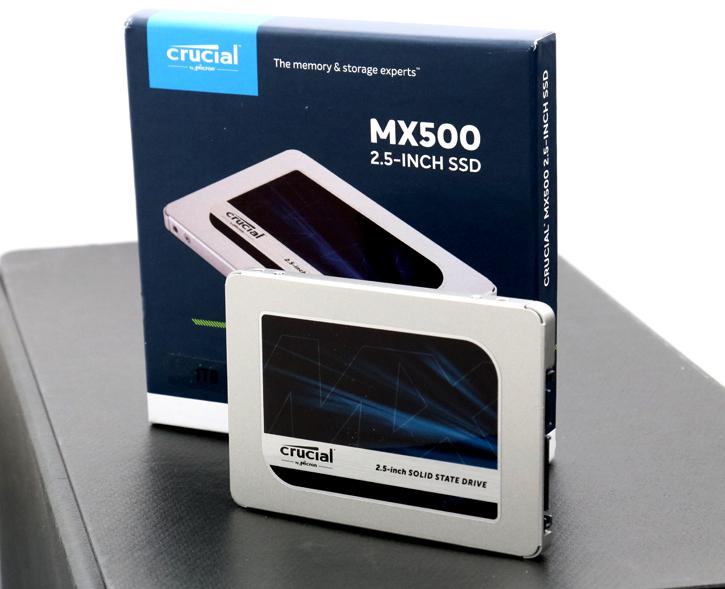Introduction
Crucial MX500 1024 GB 2.5" SSD
Proper value for money for your NAND based storage unit?
Crucial now offers their MX500 series SSDs. These units are all about value for money. But they do not compromise on performance, no Sir. The MX500 remains very fast and very effective for the money you put down on that counter. We review the new 1 TB model, the most price-competitive mainstream SSD with up-to high-end class SATA3 performance. The new MX500 will become available in 250 and 500 GB versions as well as a 1TB and 2 TB model. Also in the pipeline are Crucial MX500 M.2 2280 Solid State Drives offering the same speed at 560 MB/sec reads, 510 MB/sec writes (sequential) and 90K Random Write IOPS for all models.
Crucial basically offers two performance and price positioned series, MX and the slightly, lower positioned (affordable upgrade) BX series. The MX500 series what I label as absolute value storage, it is very price-competitive compared to mainstream to high-end class SATA3 performance. You guys likely know it, I've been in the computer industry a LONG time and have noticed that two developments evolve in very fast paces, graphics cards, and storage technology. If you look how far and fast we've become with NAND technology you can only acknowledge, it is just amazing. My first HDD storage unit was connected towards a Commodore 64, back in 1984 (!), that unit was SCSI based and could hold a whopping 10 MB of data, it did that (if memory serves me right) at roughly 40 KB/sec in read performance which honestly was blazingly fast at that time and cost me something in the extent and equivalent of 500 USD / EURO. And yes, here we are in an era where NVMe SSDs reaches 3 GB/sec and SSDs having storage capacities of 2 Terabyte priced at that same level as that Commodore 64 storage unit back in the days. It is these trends that drive SSD storage to the high-level momentum in evolution as we see today: endurance, performance, price, and capacity. The MX500 series covers all these metrics.
NAND flash memory (the storage memory used inside an SSD) has become cheaper thanks to the new 64-layer fabrication. Prices a few years ago settled at just under 1 USD per GB. These days a good NVMe SSD can be found under 50 cents per GB. With parties like Samsung, Toshiba, and Micron the prices have now dropped towards and below the 30 cents per GB marker for SATA3 TLC based units. This means that SSD technology and NAND storage have gone mainstream and due to the lower prices, the volume sizes go up as well. A couple of years ago a 64 GB SSD was hot stuff, then slowly we moved to 120 GB, last year 240 GB for an SSD in a PC was the norm, this upcoming year we'll transition slowly to roughly 500 GB and 1 TB per SSD as the norm with sub prices for TLC NAND in the 25 Cents per GB range. With the market being so competitive, it brought us to where we are today. Proper volume SSDs at acceptable prices with very fast performance. Not one test system in my lab has an HDD anymore, everything runs on some form of NAND storage, while I receive and retrieve my bigger chunks of data from a NAS server here in the office. The benefits are performance, speed, low power consumption, no noise and very good reliability.
Micron (the mother company behind Crucial) this week has announced the MX500 series in capacities of 250 GB, 500 GB, 1 TB, and 2 TB, these drives are fitted with that new 64-layer vertically stacked NAND (also referred to as 3D NAND). It is paired towards a Silicon Motion SM2258XT controller. Crucial guarantees this SSD for 5 years under warranty and/or a 360 TB (terabytes) written (TBW) for this 1 TB model. Have a peek and then let's head onwards into the review.


